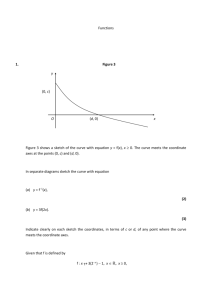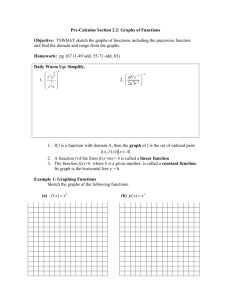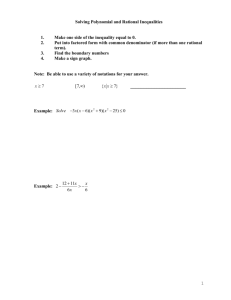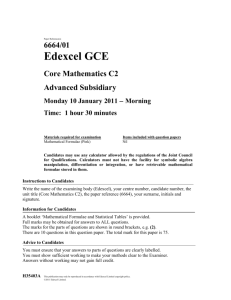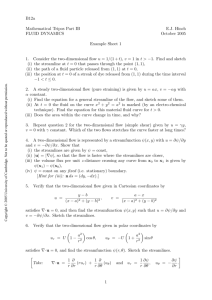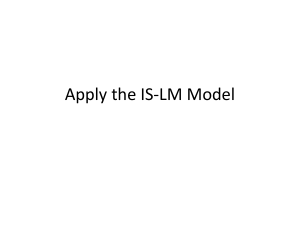The Normal Distribution
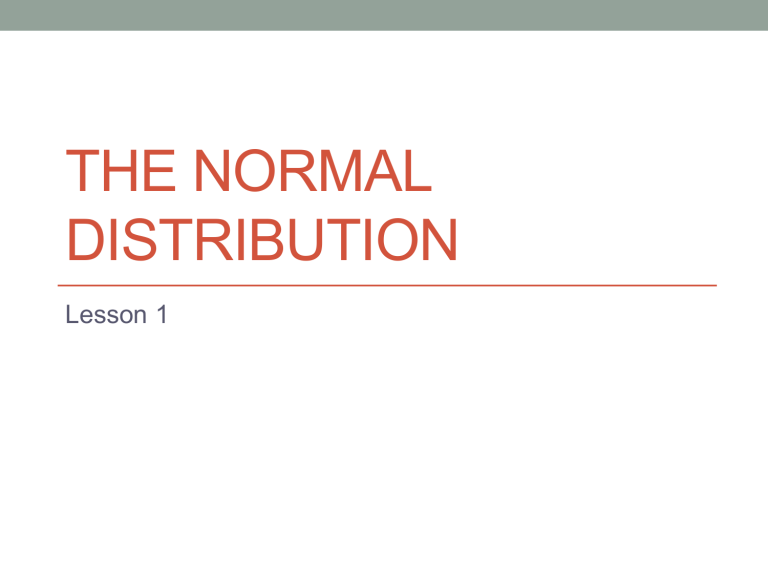
THE NORMAL
DISTRIBUTION
Lesson 1
Objectives
• To introduce the normal distribution
• The standard normal distribution
• Finding probabilities under the curve
Normal Distributions
Normal distributions are used to model continuous variables in many different situations.
For example, a normal distribution could be used to model the height of students.
We can transform our normal distribution into a standard normal distribution …
The standard normal variable
The standard normal variable is usually denoted by Z
It has a mean
=0 and a standard deviation of
=1
𝑍~𝑁(0, 1 2
)
The curve is designed so that the total area underneath the curve is 1
The curve fits within ±4 standard deviations from the mean
-4 -3 -2 -1 0 1 2 3 4
Find P ( Z≤a)
To do this we begin with a sketch of the normal distribution
P ( Z≤a) a
To do this we begin with a sketch of the normal distribution.
We then mark a line to represent Z=a
P ( Z≤a) a
To do this we begin with a sketch of the normal distribution.
We then mark a line to represent Z=a
P( Z≤a) is the area under the curve to the left of a.
For continuous distributions there is no difference between P( Z≤a) and P(Z<a)
Ex1 Find P (Z<1.55)
To do this we begin with a sketch of the normal distribution
Ex 1 Find P (Z<1.55)
To do this we begin with a sketch of the normal distribution.
We then mark a line to represent Z=1.55
a
Ex 1 Find P (Z<1.55)
To do this we begin with a sketch of the normal distribution.
We then mark a line to represent Z=a
P(Z<1.55) is the area under the curve to the left of a.
We now use the table to look up this probability a
The Normal Distribution Table
• The table describes the positive half of the bell shaped curve…
•
(Z) is sometimes used as shorthand for P(Z<z)
The Normal Distribution Table
Ex 1 Find P (Z<1.55)
To do this we begin with a sketch of the normal distribution.
We then mark a line to represent Z=a
P(Z<1.55) is the area under the curve to the left of a.
We now use the table to look up this probability a
P(Z<1.55) = 0.9394
Ex 2 Find P(Z>1.74)
Ex 2 Find P(Z>1.74)
Note this result..
P(Z>a) = 1-P(Z<a)
So
P(Z>1.74) = 1 – P(Z<1.74)
= 1 – (0.9591)
= 0.0409
Ex 3 P(Z<-0.83)
As our table only has values for the positive side of the distribution we must use symmetry…
Ex 3 P(Z<-0.83)
We have reflected the curve in the vertical axis.
P(Z<-0.83) = 1- P(0.83)
= 1 – (0.7967)
= 0.2033
This is a really useful technique
P(Z<-a) = P(Z>a)
= 1- P(Z<a)
This is a really useful result
P(Z<-a) = 1 - P(Z<a)
Ex 4 P(-1.24<Z<2.16)
Ex 4 P(-1.24<Z<2.16)
P(Z<2.16) = 0.9846
Ex 4 P(-1.24<Z<2.16)
P(Z<2.16) = 0.9846
P(Z<-1.24) = 1-P(Z<1.24)
= 1-0.8925
= 0.1075
Ex 4 P(-1.24<Z<2.16)
P(-1.24<Z<2.16) = 0.9846 – 0.1075
= 0.8771
P(Z<2.16) = 0.9846
P(Z<-1.24) = 1-P(Z<1.24)
= 1-0.8925
= 0.1075
Recommended work…
• Read through pages 177 and 178.
• Do Exercise 9A p179
Blank Normal Distribution Plot
-4 -3 -2 -1 0 1 2 3 4
